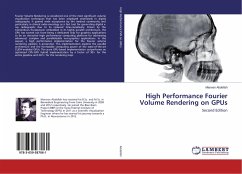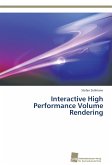Fourier Volume Rendering is considered one of the most significant volume visualization techniques that has been employed extensively in digital radiography. It gained wide acceptance by the medical community and particularly in clinical radio-oncology as a fast tool for generating digital x-ray radiographs due to its reduced time-complexity. Driven by the tremendous horsepower embedded in its highly parallel architecture, the GPU has turned out from being a dedicated chip for graphics applications to be an attractive high performance computing platform for addressing advanced, complex and parallelizable non-graphics applications. In this sequel, a high performance implementation for the Fourier volume rendering pipeline is presented. This implementation exploits the parallel architecture and the formidable computing power of the state-of-the-art CUDA-enabled GPUs. The pure GPU-based implementation outperforms an optimized CPU-GPU hybrid implementation by a factor of 30× for the entire pipeline and 247× for the rendering loop.
Bitte wählen Sie Ihr Anliegen aus.
Rechnungen
Retourenschein anfordern
Bestellstatus
Storno








